Steve Johnson's Blog: The Minimalist Photographer
December 18, 2013
What is Fine Art Photography Exactly?
Every so often a discussion appears, on on a prominent website somewhere, asking for people to comment on what they consider to be fine art photography and/or fine art photographers. The latest one that I have come across is on Linkedin. (Unfortunately it is within a locked group so there is no point linking to it). Right off the top I want to say that I have never and never will refer to myself as a fine art photographer. The words hold no meaning for me and what follows is an attempt to explain why.

Fine Art? – That depends upon the artist’s intent.
As I’ve mentioned on more than one occasion I came to photography via other, more established, visual arts such as painting and drawing. Within these disciplines the term fine art has a very specific meaning that has absolutely nothing to do with the quality of work produced. It means, simply art that has no purpose other than being art – art that is its own reason for existing. In other words it is art that is not intended to sell something, i.e. commercial or to decorate something or to do anything else other then be looked at.
One thing the term fine art most definitely is not is a measure of quality. It is instead related to of the intent of the artist. To qualify, the intent would have to be to produce something that has no specific purpose outside of itself. Of course the piece produced may be put up for sale and could even make the artist a bucket-load of cash but this is very different than the production of a piece of commercial art, say as part of an advertising campaign for example, where there is a specific function in mind from the outset.
Many photographers get very confused when it comes to modern art in general and conceptual art in particular. For some reason they cannot understand that, by the above definition, a shark in formaldehyde or an unmade bed are every bit as much fine art as is the Mona Lisa. I believe that this confusion comes about due to the conflating of the term fine art and a certain style of very technical representational painting.
This happens due to the relative newness of photography as an art form and the relatively recent acceptance of photography as equal to the other visual arts. Personally I would like to see photography adopting common language and usage of terms with the other visual arts – this would stop a lot of confusion and allow photographers to communicate much more effectively with both the public at large and perhaps more importantly, other photographers.
Many photographers refer to themselves as fine art photographers and I can see a few reasons for this – one being marketing and another being a a lack of understanding of the term fine art. I do not take issue with the former as much greater wrongs are committed in the name of marketing. I do, however, think that such a marketing strategy could well prove counterproductive as at says little and is easily shown up for the empty thing that it is.
The second reason, the lack of understanding is more troubling. I presume photographers use the term to imply that their work has reached a certain level of quality – that they are above the common herd. My question to them, notwithstanding the fact that the designation fine art is not a qualitative but rather a functional one, is where is the bar set and who sets it? Do you have to win a certain number of awards or does the recognition come in other forms ? Complimentary terms preceding a profession usually come across as a bit hokey to my mind.
Better in my opinion to just call oneself a photographer preceded by specialty be it abstract, macro, lansdcape, portrait, studio, wedding or any one of a hundred others but please leave the fine art thing alone. If you really need to use the term save it for personal projects as, by definition, it cannot be used for commercial work. It is worth bearing in mind that the vast majority of painters prefer the simple designation painter even to artist let alone fine artist!
By way of a final thought I would like to emphasize that there is stunning work being done in all genres and the fact that it is not technically fine art does not detract from it one iota. Across the visual arts much of the best work is done to serve a non-arts based purpose – one only has to look at the quality of a lot of advertising imagery to see this. I also think that there is plenty of mediocre work being put out that does qualify as fine art by the definition given. It really is not a quality thing.

December 9, 2013
Nurturing the Inner Obsessive

Bath Mat
A few days ago, while doing the weekly grocery shop, we stopped to look at bath mats. I know, such a glamorous life. While normal people would think in terms of which one would provide the best grip or even which one would best match the decor not me – I immediately go to that part of my brain that assesses photographic possibilities and then goes on to obsess over them.
My wife, Meg, is used to this approach and is extremely understanding so we walked out of our local Target with a very over the top blueish/aqua transparent and semi transparent thing that is meant to resemble pebbles under water (I think).
I spent two hours positioning, lighting and taking photos of this bath mat. I have over three hundred photographs of it – most of them being basically garbage and will never see the light of day. Here are a few that I thought were OK and worth showing. This intense focus on one subject is a great way to train the brain and the eye to really see. A don’t think that I’ve ever known a good photographer who wasn’t at least somewhat obsessive.
As a bonus Meg really likes the mat due to it being very soft on the feet – unlike our last one which was hard, spiky and obviously designed and bought to market by people who didn’t like other people very much. The mat is available from Target for around thirteen dollars and comes in clear vinyl as well as the blue/aqua version that you see here.
On a completely different note I got to see a feature about my photography that appeared in the 31st August issue of UK print and digital magazine The Amateur Photographer. The article is entitled, ‘It’s the Little Things’. So if you subscribe to that particular publication and keep your back copies let me know what you think. I think that it is a really nice feature and all credit to Debbi Allen, the author.

Macro
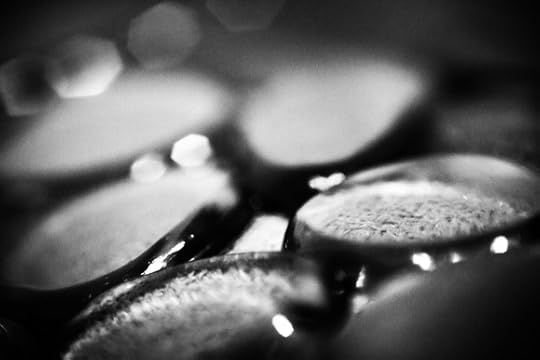
High contrast monochrome close up.
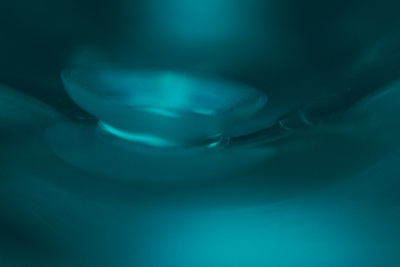
Softened close up of a sucker
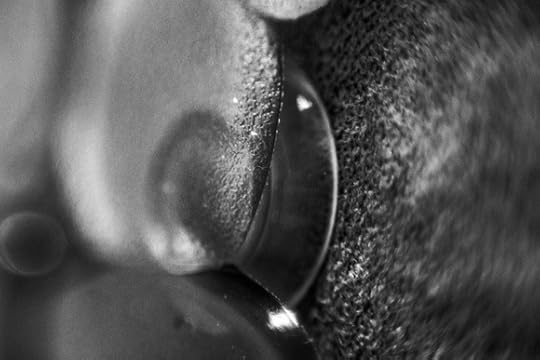
Macro high contrast and rotated 90 degrees
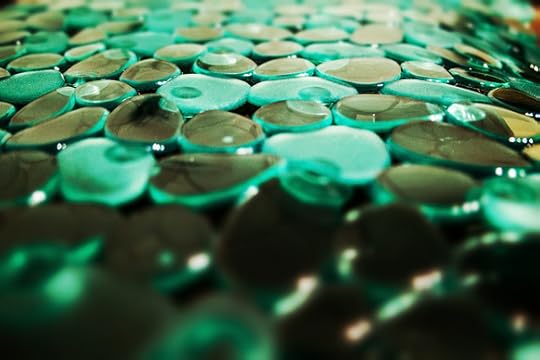
Narrow depth of field effect added in post production
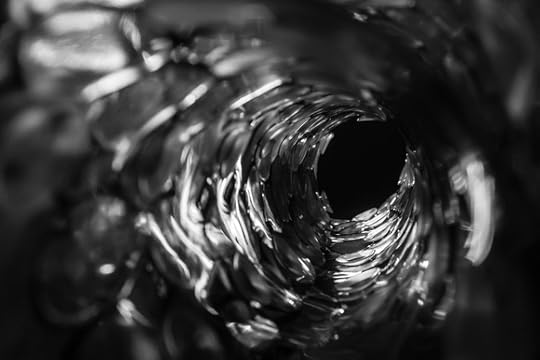
Rolled up. Low key shot

This one looks almost organic to me. Looks like cells.

High Key through the tube.
For larger versions of these images (just click on the thumbnail, hover over the image and select option from the dropdown menu). Up to 1440 px versions available for download and non-commercial use.

December 4, 2013
A Camera, a Light, and a Length of Wire
For some reason I do not like looking like a photographer when I’m out and about. Something very old geezerish, (and I write as a member of that particular demographic) about wandering around with bags and camera vests and the suchlike. Reasonably priced, reasonably large sensor equipped, mirrorless cameras promise to make this concern a thing of the past.

My default walking out of the front door gear.
Introduction
In Math there is something called optimization theory. The subject area can be guessed at from the name and is probably best explained by example: There is a hole to be dug. The hole digger has to work out the best amount of soil to extract with each dig so to speak. To much soil on each shovelful and he or she will tire quickly while too little will allow said digger to go all day but will not remove the maximum possible amount of dirt.
Deciding what camera gear to take on a trip or into a studio space has always been a bit like this – too much and confusion and an aching back result, to little and the shot could well get away. The camera problem is actually more complex than the shovel one as there is an extra variable to consider in addition to bulk and that is cost. Making smaller things do the same job as bigger things is expensive – especially in the early days of release.
I have finally arrived at a compromise that feels right and will probably dictate my gear process for the next few years – that is unless there is a really dramatic technological leap in the offing. Anyway, that is what this post is about.
My basic walking out of the door kit now consists of:
A Samsung NX 1000 camera with kit 30mm – 75 mm efl lens
A Nikon SB 600 strobe/flash
A PC/audio cable (links camera to flash and has nothing to do with sound, computers, or political correctness)
Two universal hot shoe translators
and that is it.
This all fits very easily into two pockets of my winter coat and even allows for the addition of an extra lens in my case. I usually add a Nikon 50 mm f/1.8 with a macro reversing ring on one end and a Samsung to Nikon converter on the other but sometimes will and something different like a Lensbaby with the converter.
Strobe
Nikon strobes seem to be more than happy to cooperate with Samsung NX cameras. This obviously means that any method of getting the flash off camera will also work so synch cables (the curly springy ones) will work as I guess will some remote triggering methods. The choice of PC cable may come as a surprise given the fact that they are pretty crappy and prone to breaking and I admit that this decision is a bit of a compromise. The reasons for the choice. however, is that the other options are actually worse. Remote triggering by light is too dependent upon ideal conditions and just too unpredictable while the springy sync cable would be unworkable as the strobe would be yanked off its surface whenever the photographer took a step. The sync cable is also a very bulky item.
It is worth mentioning that the Nikon SB 600 is no longer made but I’m guessing that other Nikon strobes will work. I like the SB 600 because it is professional quality but nowhere near as bulky or complex as Nikon’s higher end offerings. As for other manufacturers as far as I know Canon won’t work (contact issue IIRC). Samsung do make at least one suitable strobe but I have no experience with it. One thing to watch out for is that some strobes, especially much older ones can damage the camera – research this for any given combination before testing!
On a practical note the strobe really does need to have an adjustable head – in all directions as bounce flash with white walls, ceilings, pieces of paper and card as modifiers will be essential. I will also add that there is no problem with using the SB 600 on camera (usual hot shoe arrangement) but the whole thing can feel a little unbalanced. It is also worth noting that there will be no TTL action with this setup and that manual camera mode will have to be used. I don’t want to get into a mini strobe tutorial here – suffice to say that using flash with manual is not difficult and basic trial and error using the camera’s view screen will usually get good results. Shoot in RAW and white balance can be corrected later along with exposure if required. Easy enough to get it right in camera with a little practice though.
Hot Shoe Translators
Much more about these gems here basically these add a pc and an audio type connector to a camera and a strobe unit. I don’t want to go to deep into the reasoning behind the audio thing here, suffice to say that it has nothing to do with sound but rather is a good alternative to the proprietary and not great pc connector.
Anyway this does allow for certain options regarding the cable. pc to pc, audio to audio or pc to audio – I use the latter configuration simply because I had a couple of those cables lying around – the next time I upgrade I will be going for audio to audio. One thing that needs to be stressed is that if the audio connector is used it has to be a mono one – stereo ones really screw up communication between camera and strobe).
The translators also do one other very important thing – they allow the strobe to be sat on a small plastic stand and consequently any level surface – no tripod or light stand required.
Camera
I chose the Samsung NX 1000 for a couple of reasons. Firstly it is relatively cheap. I purchased mine when it started to appear for around the $300 mark with its kit lens. I’d wanted to try mirrorless for some time but was put off by the relatively high prices. I figured that I could live with a $300 mistake but not a $3k one. Suffice to say I have no regrets.
The second reason is that it has an APC-S sensor (1.5 crop in relation to 35 mm). Whatever anyone says size does matter and I need this size of sensor.to hit the quality bar that works for me. Nothing against the smaller point and shoot sensors (I use them a lot) but in more demanding working conditions the extra area really helps. Different people have different views on this – many photographers would argue that only a 35 mm sensor is good enough while others will say that anything less than medium format is good enough. Me? I think that the crop sensor is more than good enough.
The other thing, regarding the camera itself, that determines image quality is the lens and the Samsung kit lens is more than up to the task – at least for my needs. Samsung has built up a pretty good ecosystem regarding lenses and they now have a pretty comprehensive range. One thing that is worth mentioning regarding mirrorless cameras and lenses in general is that ultra-wides tend to be a whole lot less bulky than DSLR equivalents. This is due to the much shorter distance between the sensor and the rear most glass element. Of course this makes them much cheaper than the DSLR equivalents.
I do a lot of close up and macro work and the kit lens lets me get in pretty close. The sensor is 20 mp and this allows for some heavy duty cropping. To put it In non-math terms I can get a very good, quality, highly enlargeable image of a scene an inch across. For the ratio inclined that is roughly a de facto 1:1 though technically it isn’t. (I will happily address that in the comments if required). On the very odd occasions when I need a higher resolution macro I use the Nikon 50 mm lens reversed.
Samsung produce a wide range of mirrorless APC-S sensor cameras covering a wide range of price points. The differences are mostly not in the important things such as sensor or glass but in things such as build quality and view-screen improvements. The one difference that could be important is that some of the range come with an electronic view finder and some with the possibility to attach an optional one. The NX 1000 has no EVF option. This is not an issue for me but could be for others. Re build quality the NX 1000 is certainly as good as I need. As an aside I’ve always purchased so called entry level consumer cameras in preference to pro models and have never had the casing break or fall apart on me yet.
Low Light
This is where this setup wins. The high ISO performance on the camera is very good and I usually have mine set to 6400. With a little work in Lightroom (4 or 5) really good results that stand up to pixel peeping can be produced. This, combined with the respectable sensor size in addition to the Flash option means that there are very few times, even in the lowest light conditions where good quality images cannot be made. On a bright sunny day a high quality point and shoot may be able to come close to this setup but as soon as the light becomes iffy there is simply no contest.
Final thoughts
I am not saying that this set up is perfect for all types of photography – anything that requires burst mode, especially sports would not be served well. In the case of landscape photography it is not so cut and dried. The days of requiring huge sensors for landscapes are in the past and the vastly reduced cost of wide angle lenses could make mirror-less cameras attractive. Where long exposures are required, e.g. after sunset or for blurry looking water any gains by reducing camera bulk are more than wiped out by tripod bulk. For studio work I now default to the mirror less setup every time – ditto for closeup work.
There is no perfect solution regarding gear. It will always come down to a series of compromises between opposing forces such as budget, bulk, and flexibility but it now feels to me as if I am finally getting somewhere.
I ought to add just for the record that I have no association with, nor do I get any money or equipment from, any corporation or company mentioned in this post.

December 3, 2013
The Originality Question
This post is a stab at a topic that has preoccupied me for much of my creative life. It is one that I want to finally bury for good and this piece is an attempt to do that. Apologies in advance if it comes across as a little preachy (I really struggled with the editing).
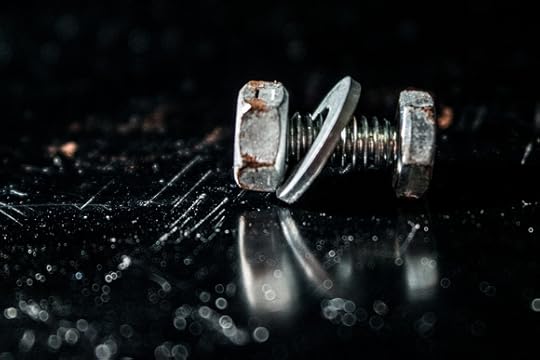
…but is it Original?
The subject of originality is one that occupies all artists including photographers at some point or other in their careers. Some never move past it and spend their entire careers striving to produce something that is truly original. History tells us that such a pursuit only rarely if ever leads anywhere good. The more common result of this approach is a frustrated artist who got stuck so to speak, and therefore failed to reach their full potential.
A certain level of acceptance is a good thing. I have no issue with is the Post Modern idea that everything has already been done and all that is left is arranging the elements in different ways – juxtaposition. Many artists find this concept terrifying and many an existential crisis has been prompted by little more than consideration of this fact.
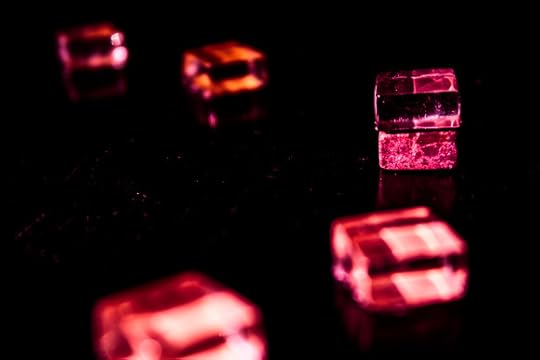
Very pink
The Post Modern idea that everything artistic that can be done has been done preceded the digital image explosion by about 50 years give or take so it is not a knee jerk reaction to the sudden ubiquity of photographs. The idea itself surfaced in a time when there were only a tiny fraction of the numbers of photographs in existence when compared with today.
Forgetting the whole art philosophy side of things for a moment and thinking in terms of what we see around us the thought that there really is nothing new is not to much of a stretch. Cameras everywhere and the ease of instant online publishing means that not only is there a photograph of just about everything but also that just about anyone with a computer and a connection can access a photo of just about anything within a matter of seconds.
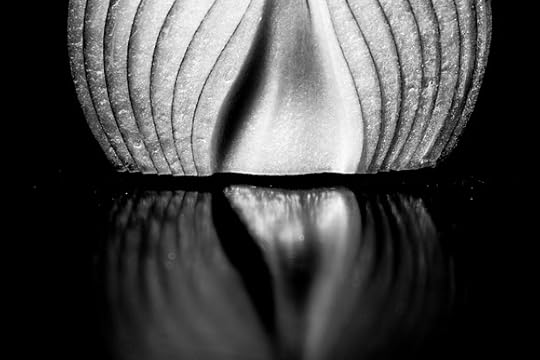
An onion reflected
The only exception to this is technology based newness, something new with very high speed synch flash for example or maybe a new really elaborate setup that allows the capture of something quirky. Remember the goldfish that seemingly leaped out of their bowls that suddenly appeared on the front page slider of just about every stock photo site? Interesting, technically superb and extremely inventive to say the least but with all of the emotional content and longevity of an already open can of beans.
The bottom line is that, as photographers, we will not change photography by aiming for novelty and originality. This may appear to be a very gloomy assessment but it really isn’t. An acceptance of the fact that there is nothing new frees the photographer up to do his or her own thing as there is simply no point in chasing novelty for its own sake. Acceptance stops the photographer from producing superficial and quirky but ultimately slick work.
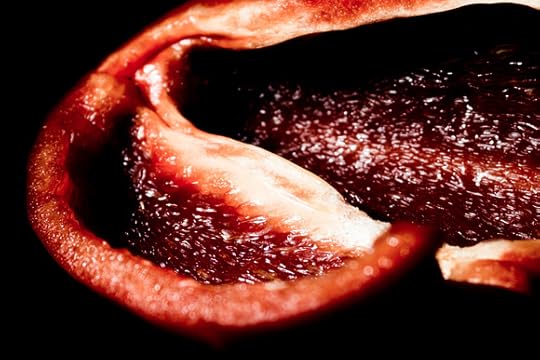
A red pepper
As there is now nothing to be gained from skimming the surface hoping to chance onto something new so the only other option is to go deep, for the photographer to look inward to see what really gets their juices flowing. This is much easier to do when the pressure of having to produce something stunningly original is removed from the equation. To put it another way, as artists it is really hard to get past the internal voice that stops us following through with ideas because it deems them unoriginal – unless we understand that said inner voice is completely irrelevant (at least with regard to this specific issue).
Now this is where we come full circle and I appear to totally contradict myself. By going deep as opposed to going broad/superficial we actually stand a chance of producing something original. This is because the deeper we go the more the photograph/series/body of work becomes about us and the more that the work is about the individual the more unique it will be – after all we are all unique. To put it another way, true originality is possible but never when it is articulated as a specific goal.

Scratches and dust
On a different note the photographs don’t really have much to do with this post but are all images that I’ve made over the past week using a camera/strobe setup that is fast becoming my default – it is incredibly cheap, small and capable of producing very high quality work. I will detail it in my next post – which I will hopefully write up tomorrow.
On yet another completely different and very happy note my book The Minimalist Photographer was featured as one of Photo.net’s best ten books of 2013 . To say that I was pleased and excited by this would be a massive understatement! Follow the link to see the very kind write up along with the other nine books that made the cut.
More discussion about this post over on Google Plus

November 27, 2013
Black and White Games
This is one of my favorite sets of images.
Just click on any of the thumbnails to see a much larger version (will open on this page and in this window).

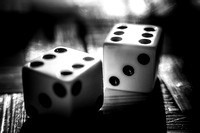
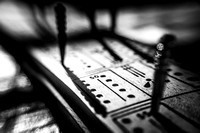
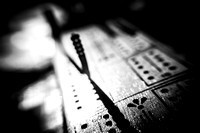

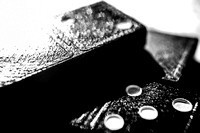
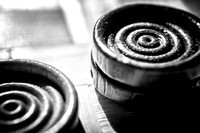
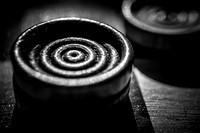
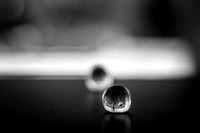
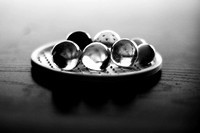


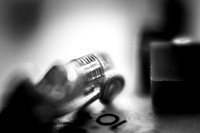
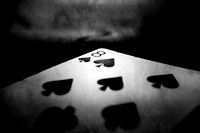
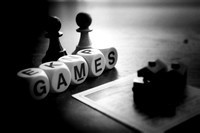
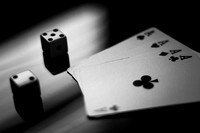

November 26, 2013
David Bailey; Photographer
In Conversation with David Bailey and Tim Marlow from Scream on Vimeo.
David Bailey is a British photographer who made a name for himself photographing fashion in the 1960s. Along with fellow photographers,Terence Donovan and Brian Duffy he helped create the whole ’60s Swinging London’ thing. He worked for Vogue at the time. To the best of my recollection he was probably the first British photographer to become a household name – this was as much due to an advertising campaign for the Olympus Trip camera as his work with the fashion industry.
David Bailey is probably my favorite photographer to watch and listen to. He is extremely unpretentious, doesn’t filter his views for mass consumption (at least as far as I can tell) and, perhaps most importantly, says really interesting stuff – not just about photography but about art in general (he also paints) and just about any other subject.
Bailey photographs people, portraits and fashion that is what he does. Regarding fashion he says that it is never about the clothes – make the model look good and the clothes will automatically work – or words to that effect. On photographing things other than people he really doesn’t see the point. On one occasion he said that there is no point of photographing a tree – if you want a photograph of a tree buy an Ansel Adams. Easy for him to say.
This is a fun video with loads of humor and to my mind it shows Bailey at his irreverent, intelligent, comfortable in his own skin best. I don’t want to give away to much but there are several highlights, at least for me at any rate. At one point the interviewer, Tim Marlow, bizarrely states that a Leonardo Da Vinci painting, The Annunciation, is deeply flawed. Bailey has great fun with that – and in all fairness Marlow has the good sense to stop digging very quickly.
In with the banter there were a couple of really interesting points two of which stood out to me. Bailey states that the English/British really don’t ‘get’ photography, that we tend to see it all as one thing, not differentiating at all between genres, styles, or anything else. He thinks that the other European countries and the USA have a much better grasp of the art form. I think he has a point.
the conversation veers between photography, visual art and general observation and one completely non photographic observation made me sit up and that was that was that Americans love the American flag but aren’t that keen on America itself. I don’t think that I agree with him on that point but there again I’ve only been on this side of the pond for little over a decade so it is probably to early for me to form an opinion.
Here is one of the many Olympus Trip ads that made David Bailey a household name in the UK.
The David Bailey Olympus Trip TV Commercial from Glyn Evans on Vimeo.

November 22, 2013
Nothing About Photography – Everything About Being a Photographer
Yesterday while I was practicing work avoidance researching a topic, I came across a video of a short presentation by Zack Arias that I hadn’t seen before. In it he talks about another short video that he made several years ago . The original video changed my relationship to my own photography. I don’t want to give to much away as I don’t want to dilute the impact of the video if you haven’t seen it before. I will say though, that if ever you have hit the creative wall or more seriously perhaps, suffer from depression or Seasonal Associative disorder (SAD) then this is a must watch. Actually scrap that last sentence – if you’ve ever picked up a camera or been involved with the visual arts then this is a must watch.
I am posting both the original video as I think that it is best viewed without context or explanation first then the second which contains the first video in its entirety bookended by Zack Arias recounted the story behind it. The second video is a light, fun watch. If you have never heard of him (unlikely I suspect) or have no clue what I’m going on about then watch the first one before the second one – just trust me on this.
2012/02 Creative Mornings with Zack Arias from CreativeMornings/Atlanta on Vimeo.

November 20, 2013
What Makes a Good Abstract Photograph?
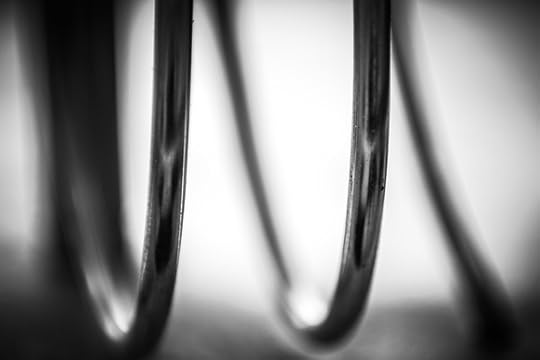
Judging abstract photography is hard!
This was a question posed to me by Aamir Shahzad over on Google+. To be strictly honest it was a question posed a long time ago that I forgot to answer – apologies Aamir. Anyway I figured that the answer may possibly be of interest to others so I’m posting the answer. Aamir also asked me about contemporary photographers that influence me.
What Makes a Good Abstract Photograph?
It is almost impossible to say other than within the context of what the photographer or artist wants to say so you’d have to have some notes from the artist. An abstract work can be pleasing to the eye in which case it works on a decorative level but this may or may not have been the photographers intention.
with representative (figurative) work it is easier to judge as it is possible to see whether the exposure, focal distance, and other technical aspects are mastered but even here it is not always possible to judge – the photographer may have deliberately blurred the main object in a scene to disorientate the viewer or made a composition deliberately uncomfortable as is the case with film noir.
Now there are different levels of abstraction that fall somewhere between the completely unrecognizable and the completely figurative, i.e. some elements in an image may be recognizable (figurative) whereas others are not due to such techniques as blurring, clipping blacks or blowing out lighter tones. I think that it is possible to assess these images – or at least to make a stab at it as these images are generally made with normal aesthetic conventions in mind. In other words the photographers intent is to produce a good image by fairly conventional standards.
There is no magic formula for creating a good photograph in any genre – if there was such a formula it would be discovered and art would be over – finished. The Greeks certainly tried a couple of millenium ago with their ratio and other geometric obsessions.
Regarding Post Modernism I’d say that the question ‘What Makes a Good Abstract’ moot unless I suppose the answer is couched in terms relating to the artist’s intent and nothing more. Think about it a second, photography has moved from Pictorial to Modern to Post Modern and each of these is a step away from being able to rank a work against other works.
My Influences
I look at a lot of photographs of all genres but, to be honest, there are no photographers that I imitate – at least not on a conscious level. Saying that I am sure that most, if not all, of my work is derivative. I do agree with the post modern line of thought that there is nothing really new to be said artistically and that juxtaposition and rearranging existing elements is where we are currently at.
I think that i am influenced by movies more than still photographers truth be told – Alfred Hitchcock, Fritz Lang, Ridley Scott are three that immediately spring to mind. Contemporary TV also finds its way into my work, programs such as Lost and Spooks (MI5 in the US) being two that come to mind.
I also read a lot and certain authors have a way of putting images and, more importantly, atmospheres in my mind that definitely spill over into my photography. I find J.G. Ballard to be one of the most evocative and I am pretty sure that my beach photos are influenced by images that he puts in my head. M. John Harrison is another, his hard boiled sci-fi noir really has a huge impact on me. There are many others.
The more that I think about it the more I am influenced by just about everything else more than by photographers – which is a good thing I think. Anyway A couple that I have liked for a long time are Harry Callahan – wonderful minimalist work. David Bailey – epitomized the energy of the 60s in London and, along with a couple of others completely changed the place of photography, especially in the fashion world. Talking of fashion Richard Avedon, again for how he changed fashion photography. Of course David Bailey is the only one still alive and active.
As far as photographers currently working no one really stands out for me. The problem being that there are too many good ones and any list would be purely arbitrary. I see images that blow me away every day – and yes, I do realize that this is a huge cop out.
Update
An afterthought: I post any contemporary photography pages that I come across and like to my twitter feed: http://twitter.com/steve_g2 the work of three or four photographers a day on average. Check the sidebar of this blog for the embedded feed and/or just follow me.

November 19, 2013
Pictorialism vs Modernism

Pictorialism and Modernism; Two massively important schools of photographic thought.
The act of taking a photograph involves many decisions. The best way to frame the image and whether to have a blurred or sharp background are just two examples of decisions that must be made. The ability to make these decisions well comes from both and understanding of composition and a sound technical knowledge. This much is common sense.
There is another consideration that can play a huge part in understanding photography and that is the historical and philosophical. Pictorialism and Modernism were the two opposing philosophies that dominated photography from its inception until the 1940. I think that these two schools of thought underpin just about all commercial, fine arts and snapshot photography, whether knowingly by the photographer or not, today. There is some experimental and conceptual work that possibly goes beyond these two schools but the percentage amount of the whole is tiny.
Introduction
This is a subject that I have touched on many times before and I make no apologies for doing so again. The more deeply that I look into the history and the philosophy of photography and try to apply what I learn, the more it always seems to come back to the relationship between Modernism and Pictorialism.
I don’t want to give long descriptions of Modernism or Pictorialism here. For the purpose of this post though I’ll use very simple working definitions. These definitions are as follows:
Pictorialism – where anything is permitted with regard to the creation a photographic image. The image did not have to look ‘real’ it had to look beautiful. This philosophy gained prominence due to early photography’s relationship with painting.
Modernism - where the intention of the photograph is to represent reality as closely as possible. It is useful to know that Modernism was largely a reaction to Pictorialism.
Modernism, Pictorialism, and Now
It is all too easy to see artistic movements as being somehow divorced from the process of making art in the present and this is especially true of photography. Of all the millions of words written about photography only a tiny percentage relate to the aesthetic history of the practice. The vast majority of writing is about gear and technique. I think that it is important to link the past with the present so terms like pictorial and modern form part of the working vocabulary and are not compartmentalized away from the act of photography. The following provides an example of how thinking in historical terms can be applied to the act of making a photograph. I could have chosen from literally dozens of such examples.
Currently, one of the most hotly debated subjects in photography revolves around whether shots taken with cell phones using various apps and effects should be taken seriously. The arguments against cell phone photography tend to fall into two categories. The first, technical quality, is easily dispensed with. If not now, then in the very near future, this will not be an issue due to ongoing improvements in the hardware. The second, the use of various filters and effects that distort and change the original image, is a much more interesting one.
The choice to use a filter indicates intent to move the image away from being a strict representation of the object or scene photographed. Other than rarer cases, say when the photographer is going for shock value, the use of filters is intended to make the image more aesthetically appealing. In other words Pictorialism trumps Modernism, at least in this case.
In truth, my favorite contemporary photographers combine elements of both Modernism and Pictorialism. Modernism provides the bones of an image so to speak, a solid framework upon which the photographer can go on to further express him or herself. This further expression can be anything from slightly increasing the orange color saturation in a sunset say, to blurring and darkening all bar a tiny portion of an image to direct the viewer in a very obvious way.
It is worth noting that increasing color saturation beyond what was seen by the camera is every bit as much of a pictorial act as applying the gaudiest Instagram filter. Both of these move the image away from what the camera actually saw with the intention of making the image more memorable to the viewer.
Incidental Pictorialism?
We live in a world where we are inundated with images. Within little over a century we have gone from being a society where individuals were exposed to very few human-made images to one where they are ubiquitous. We have gone from the image being a rare thing it being one drop in the fire-hose of visual information that assaults us on a daily basis. A hundred years ago we would have studied every image that came our way but today the images have to fight for even a few seconds of our attention.
This change does not help the cause of the out and out modernist image which, by definition, is not flashy but is just a plain representation of something. The moment that it is dressed up to draw attention to itself as an image it ceases to be modernism. Pictorialism fares much better as blur and vignette can be used to direct the focus, bokeh balls can provide extra shiny objects and just about everything else is permitted.
To put it another way, photographers who makes work that is uncompromisingly modernist would have a really time getting their work noticed in the current photography ecosystem. An images has to have the power of stopping the viewer in their tracks even when placed among tens or even hundreds of images by other photographers. The days of an image holding a viewer’s attention just because it is an image have long gone.
Photographers have egos and/or financial needs just like everyone else and so work towards getting noticed. The options for the modernist are pretty limited. Just about the only way he or she will draw attention is to compromise their modernism by making their photographic objects just shiny enough to gain an audience. The question becomes whether the Pictorialism should be just tacked on or whether it should become an integral part of the image. Instinct tells me the latter.
Me
With regard to my own photography I would say that I am 60% pictorialist with an underpinning of 40% modernist. On the one hand I do believe that it is all about the image and that the original object/scene is only of secondary importance, (after all, the viewer will never see the original scene) but on the other I like the simplicity and clean approach of Modernism.
If there is one single thing that defines my photography it is the tension between these two ways of seeing. I also see this in the work of a lot of other photographers that I admire.
If I give the impression that I think that I think that Modernism is superior or more important than Pictorialism or the other way around then that was a mistake. I do tend to see them as two sides of the same coin and I think that very few photographers, whether consciously or not, use aspects of both in their work.
Final Thought
Just as Modernism superseded Pictorialism Modernism itself gave way to Post Modernism which has given way to New or Post Post Modernism or something else with Modernism in it somewhere (depending upon which art critic or historian is writing). One thing seems to be a constant though, and that is the word Modernism and it could be this use of language that means that despite the fact that the majority of people who pick up a camera are probably pictorialists at heart art history will keep giving the impression that Modernism is the one serious visual art philosophy.

November 15, 2013
Circles and Dots and Getting Out of Ruts


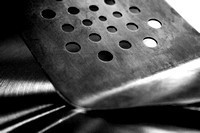
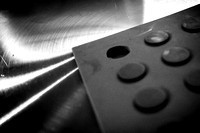

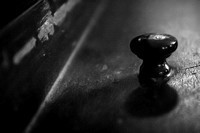
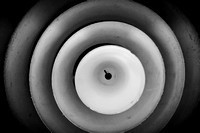
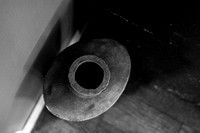
This is an example of an exercise that I do if I feel that I’m in a bit of a rut or if I have a bit of time to kill.
Rather than randomly waving the camera at stuff and firing the shutter I set myself a theme and a time limit. In this case the theme was circles and dots and my self imposed time limits were 15 minutes for shooting and 10 minutes for editing. I had no preconceived number of images in mind.
The theme can be anything fairly abstract., e.g. lines, surfaces, the color purple etc. I find that the process doesn’t work as well if specific objects or sets of objects are named such as say, flatware, items of clothing or clocks. To get even more specific I think that ball would be a bad subject choice but sphere would be a good one. The former closes the subject down while the latter opens it up.
The idea of the exercise isn’t to produce breathtaking photographs but rather to loosen up the mental muscles and hopefully to see our surroundings with a fresh eye. Speaking personally, I find that if I am thinking in terms of an abstraction my inner critic gives me a bit of time off. To put it another way, I am much more likely to work a scene than to reject it as boring or overdone. Setting out to produce several images rather than just one final photograph also has a loosening up effect. I am not sure why this should be.
Just click on any of the thumbnails to see a much larger version (will open on this page and in this window).

The Minimalist Photographer
- Steve Johnson's profile
- 6 followers



